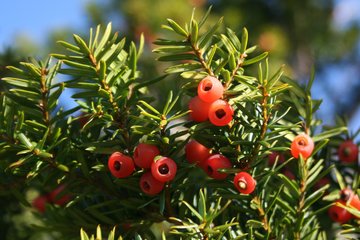Herbicide resistance caused by pre-existing genetic variation
Mechanisms of rapid evolutionary adaptation in blackgrass deciphered
Blackgrass has become the most economically damaging herbicide-resistant weed in Europe. A team led by researchers of the Max Planck Institute for Biology Tübingen and the University of Hohenheim in Stuttgart has now found out that these resistances are mostly attributable to genetic variants which predate the use of herbicides.

Farmers all over Europe wage an increasingly fervent battle against blackgrass. This annual grass, native to Eurasia and thriving in moist meadows and deciduous forests, has invaded cultivated land: growing densely and competing with crops such as wheat or barley, it can considerably reduce the harvest yield. The decades-long practice to control this weed with herbicides that target specific proteins of the plant has resulted in a concerning rise in herbicide resistance: blackgrass causes an estimated annual damage of almost half a billion euros in the UK alone. Its rapid adaptation to the herbicides threatens to outpace innovation in chemical weed control.
A team of scientists led by researchers of Detlef Weigel’s Department for Molecular Biology at the Max Planck Institute for Biology Tübingen (Germany) and Karl Schmid’s Department for Crop Biodiversity and Breeding Informatics at the University of Hohenheim (Stuttgart, Germany) has now studied the evolutionary mechanisms of how resistances arise. The two most common herbicides used against blackgrass impede the activity of either one of two proteins, which are both vital for the weed to thrive.
Blackgrass has developed different strategies of withstanding the toxins: the weed may prevent them from reaching the proteins they are designed to deactivate, for example by metabolizing them. Plants with this type of resistance are mostly still sensitive to larger doses of the herbicides. Worse for farmers and far more frequent is the so-called target-site resistance: a change directly in the gene encoding the targeted proteins can make the plant insusceptible to even high levels of the herbicide. The rapid rise of these target-site resistances led the researchers to ask what role newly arising mutations play versus mutations that are already present in a population before the exposure to herbicides.
To answer this question, the researchers started locally: “From farmers, we learned that herbicide resistant blackgrass is also a problem around Tübingen, and we were able to collect our first samples with the kind help of local farmers”, recalls first author Sonja Kersten, whose PhD project laid the foundation for the study. “We soon realized, however, that we could only learn so much from our own, limited collection. We were lucky to be able to team up with colleagues from BASF Agricultural Solutions, who already had blackgrass samples from all over the continent, allowing us to expand the scope of the study to a European scale.” BASF benefited as well, as understanding genomes such as the one of blackgrass enables them to derive stewardship measures that can contribute to the sustainable use of herbicide products.
Genetic variation provides insight into evolutionary history

The researchers generated a reference genome of blackgrass – an idealized representation of the DNA sequence that genetic studies use as a standard for comparison – and analyzed the genetic structure of resistant populations. “The variation we found in most resistant populations indicates that the spread of the resistances is the result of pre-existing gene variants, and only to a lesser degree of spontaneous mutations”, explains Fernando Rabanal, senior author of the study. “When an evolutionary advantage arises from a spontaneous mutation, we typically see a certain decrease of genetic variation across the population – and this was not the case here.” The researchers compared their empirical data with simulations of different scenarios for adaptation, confirming that the target-site resistance variants were likely present already before herbicides started to exert the selective pressure.
To get their results, the team sequenced with high accuracy the genes encoding the targeted proteins as well as their surrounding regions by generating what biologists call long-read amplicons. However, they were faced with the difficulty of having to process hundreds of individual plants, a time-consuming and costly endeavor. Kersten, Rabanal, and Weigel hence developed a gene sequencing protocol that allows to analyze over 100 individuals from a single DNA extraction without having to sacrifice much of the original accuracy.
With support from collaborators from Agris42, a Stuttgart-based company developing physiological resistance tests for farmers and industry partners, they applied their method to 64 field populations across Germany, using samples obtained from Agris42. This collection may become a valuable resource for monitoring the prevalence of resistances; all the more since simulations included in the study indicate that resistant gene variants, even the rarer ones, will persist for decades in untreated fields. With a view to the immediate practical consequences of their findings, the authors note that management strategies should not rely on herbicides alone, but rather to also “integrate mechanical weed management and crop rotation, to keep the incidence of weeds in the field continuously low”.













